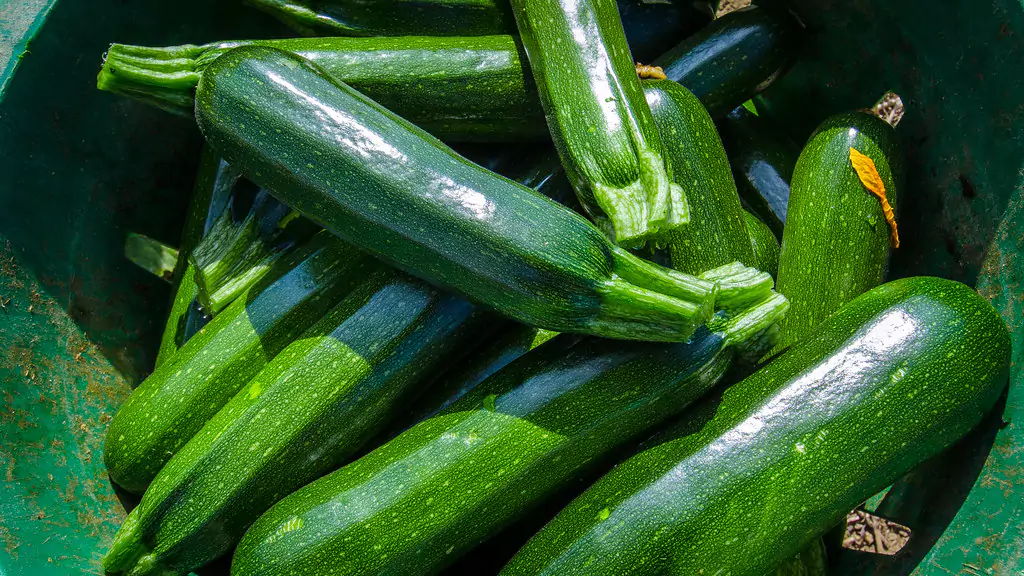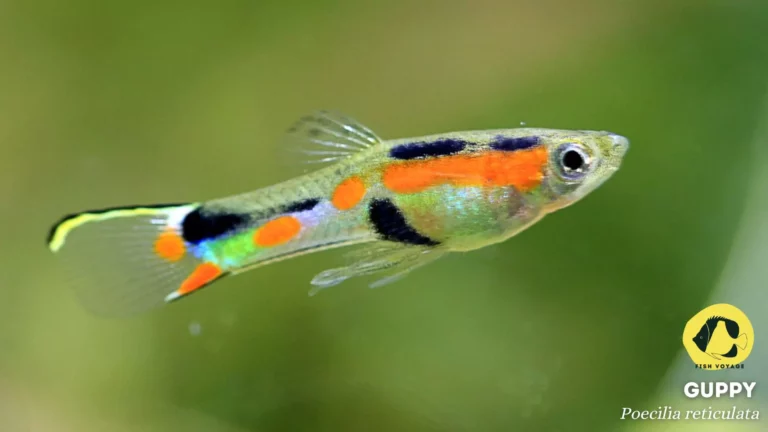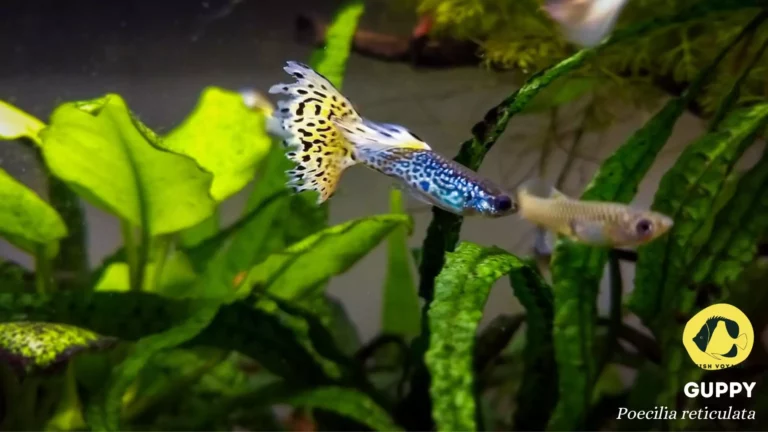What Type Of Fish Food Do Guppies Eat?

In the realm of freshwater aquarium enthusiasts, guppies stand as beloved aquatic companions renowned for their vibrant colors and lively personalities. These small, tropical fish have captured the hearts of hobbyists worldwide, gracing aquariums with their dynamic presence. However, beyond their aesthetic appeal lies a crucial responsibility for pet owners — ensuring the optimal health and well-being of these aquatic friends through proper nutrition. As discerning caretakers, understanding the dietary needs of guppies becomes paramount, as it directly influences their growth, vitality, and the brilliance of their hues. In this exploration, we delve into the essential facets of guppy nutrition, unraveling the mysteries of the ideal diet that fosters the longevity and vibrancy of these captivating aquatic beings.
Understanding Guppy Dietary Needs
Wild Diet Insights
- In their natural habitat, guppies thrive on a varied diet consisting of algae, small insects, and larvae.
- The abundance of live foods in their environment contributes to their robust health and energetic behavior.
Nutritional Requirements in Captivity
- Captive guppies necessitate a diverse diet to mirror the nutritional richness of their wild counterparts.
- A well-balanced blend of protein, carbohydrates, vitamins, and minerals is crucial for sustaining guppies in the confines of an aquarium.
Impact on Growth and Vibrancy
- The correlation between a balanced diet and guppy growth is evident, as proteins support muscle development and overall vitality.
- Essential nutrients, particularly color-enhancing pigments like astaxanthin, significantly influence the brilliance of guppies’ hues, contributing to their visual allure.
Optimal Nutrition for Reproductive Health
- A well-fed guppy is more likely to exhibit successful breeding behaviors, emphasizing the role of nutrition in reproductive health.
- Adequate nutrients are essential for the development of healthy fry and the overall reproductive success of guppy populations in captivity.
Role of Micronutrients
- Micronutrients, such as vitamins and minerals, play a pivotal role in supporting guppies’ immune systems and preventing common health issues.
- A deficiency in key micronutrients can compromise the resilience of guppies, making a comprehensive and varied diet imperative for their well-being.
In navigating the intricate realm of guppy dietary needs, recognizing the origins of their natural diet, understanding the specific nutritional requirements in captivity, and acknowledging the impact on growth and vibrant colors collectively lay the foundation for responsible and informed guppy care.
Types of Guppy Food
Commercial Guppy Pellets
Advantages of using high-quality guppy pellets
- High-quality pellets are formulated to meet the specific dietary needs of guppies, ensuring a well-rounded nutrition profile.
- Pellets are convenient and provide a controlled diet, reducing the risk of overfeeding and maintaining water quality.

How to choose the right pellet size and brand
- Consider the size of your guppies and their mouths to select appropriately sized pellets.
- Research reputable brands known for quality ingredients, and choose pellets with a balanced mix of proteins, vitamins, and minerals.
Nutritional content and benefits for guppies
- Guppy pellets often contain essential nutrients like omega-3 fatty acids, promoting healthy growth and vibrant colors.
- Specific formulations may include color-enhancing agents to intensify the brilliance of guppies’ natural hues.
Live and Frozen Foods
Importance of variety in a guppy’s diet
- A varied diet mimics the diversity of their natural food sources, contributing to overall health and vitality.
- Rotation of live and frozen foods prevents dietary monotony, encouraging a more robust appetite.
Suitable live and frozen foods
- Brine shrimp provide essential proteins, daphnia contribute to digestive health, and bloodworms offer a rich source of nutrients.
- These options replicate the variety guppies would encounter in the wild, promoting a well-rounded nutritional intake.

Offer feeding guidelines for these foods
- Feed live and frozen foods in moderation, supplementing them with a staple diet of pellets.
- Adjust portion sizes based on the number of guppies and their size, preventing overfeeding and maintaining water quality.
Vegetable-Based Options
Role of vegetables in a guppy’s diet
- Vegetables offer essential vitamins, minerals, and fiber, promoting digestive health in guppies.
- Incorporating plant-based options adds variety to their diet and supports overall well-being.

Vegetables like spinach, zucchini, and peas
- Spinach provides iron and other nutrients, zucchini serves as a source of fiber, and peas offer a well-tolerated vegetable option.
- These vegetables can be easily integrated into a guppy’s diet, enhancing nutritional diversity.

Preparation and feeding tips
- Blanche or finely chop vegetables for easy consumption by guppies.
- Introduce vegetables gradually to gauge acceptance, and remove uneaten portions promptly to maintain water quality.

In navigating the diverse landscape of guppy nutrition, a comprehensive understanding of commercial pellets, live and frozen foods, and vegetable-based options empowers aquarists to curate a diet that caters to the specific needs and preferences of their vibrant aquatic companions.
Feeding Schedule and Quantity
Establishing a Feeding Schedule for Guppies
- Develop a consistent feeding routine, aiming for 2-3 small meals daily.
- Scheduled feedings help regulate the amount of food consumed, promoting a healthier environment in the aquarium.
Appropriate Quantity to Avoid Overfeeding or Underfeeding
- Tailor portion sizes to guppy size and age, offering an amount they can consume within 2-3 minutes.
- Overfeeding leads to water quality issues, while underfeeding may stunt growth and compromise health.
Insights into Adjusting Feeding Based on Age
- Juveniles: Feed small, frequent meals rich in protein to support rapid growth.
- Adults: Transition to a balanced diet, incorporating both pellets and live/frozen foods for nutritional variety.
Adjusting Feeding Based on Breeding Status
- During Breeding: Increase the frequency of meals, focusing on protein-rich options to support the energy demands of breeding behaviors.
- After Birth: Gradually reintroduce the female to a standard diet, ensuring a balance of nutrients for both the mother and fry.
Observation and Adaptation
- Regularly observe guppies for signs of overfeeding (uneaten food, cloudy water) or underfeeding (lethargy, weight loss).
- Adjust feeding quantities based on these observations and the specific needs of the guppy community.
Incorporating Fasting Days
- Introduce fasting days once a week to mimic natural feeding patterns and prevent digestive issues.
- Fasting also helps maintain water quality by reducing excess waste in the aquarium.
Utilizing Automatic Feeders
- Consider automatic feeders for consistent portion control and scheduled feedings, especially in larger aquariums.
- Ensure the feeder dispenses a variety of foods to maintain a balanced diet for guppies.
Balancing Pellets and Live/Frozen Foods
- Combine the convenience of pellets with the nutritional richness of live and frozen foods.
- Achieve a balance that caters to guppies’ dietary requirements while avoiding monotony in their meals.
A meticulous approach to feeding schedules and quantities is pivotal in fostering the optimal health and vitality of guppies. By adapting feeding practices based on age, breeding status, and careful observation, aquarists can cultivate a thriving aquatic environment that enhances the well-being of their colorful companions.
Tips for Enhancing Guppy Health Through Diet
Recognizing the Diet-Health Nexus
- Acknowledge the pivotal link between a well-balanced diet and the overall health of guppies.
- A nutrient-rich diet directly influences their immune system, growth, and reproductive capabilities.
Diversify Their Menu for Optimal Nutrition
- Offer a diverse range of foods, including pellets, live, frozen, and vegetable-based options.
- A varied diet ensures guppies receive a spectrum of essential nutrients, promoting overall health and vitality.
Supplementing Omega-3 Fatty Acids for Wellness
- Incorporate foods rich in omega-3 fatty acids, such as brine shrimp and certain pellets.
- These fatty acids contribute to guppies’ cardiovascular health and boost their immune system.
Monitor and Adjust Diet Based on Individual Needs
- Observe each guppy’s behavior, growth, and coloration to tailor their diet.
- Adjust feeding practices based on individual preferences and nutritional requirements.
Avoid Overfeeding to Prevent Health Issues
- Exercise caution to prevent overfeeding, a common cause of health problems in guppies.
- Uneaten food can lead to water quality issues and impact the overall well-being of the aquarium ecosystem.
Consider Seasonal Adjustments in Diet
- Acknowledge seasonal variations in guppies’ metabolism and adjust their diet accordingly.
- During breeding seasons, increase protein-rich foods to support reproductive activities.
Maintain a Clean Aquarium Environment
- Regularly clean the aquarium to remove uneaten food, debris, and maintain water quality.
- A clean environment reduces the risk of diseases and supports guppies’ overall health.
Introduce High-Quality Water Filtration
- Invest in a reliable water filtration system to remove impurities and maintain optimal water conditions.
- Clean water contributes to the health of guppies’ fins, scales, and general well-being.
Quarantine New Fish to Prevent Disease Spread
- Quarantine new guppies before introducing them to the main tank.
- This precautionary measure helps prevent the spread of diseases and ensures the health of the entire guppy community.
Consult with Aquatic Experts
- Seek advice from experienced aquarists or consult with aquatic experts for personalized guidance.
- Professional insights can aid in addressing specific dietary and health concerns, optimizing guppy care.
By cultivating a thoughtful approach to guppy nutrition and maintaining a pristine aquarium environment, aquarists can ensure the holistic well-being of their aquatic companions. Recognizing the symbiotic relationship between diet and health allows guppy enthusiasts to create an environment where these vibrant fish can thrive and showcase their natural beauty.
Conclusion
In the intricate tapestry of guppy care, the significance of a well-crafted diet emerges as a linchpin for the health, vibrancy, and longevity of these enchanting aquatic companions. As stewards of guppy ecosystems, we’ve explored the diverse facets of their dietary needs, from the nuanced balance of high-quality pellets to the enriching variety offered by live, frozen, and vegetable-based foods.
A symphony of proteins, vitamins, and minerals harmonizes to enhance not only their physical well-being but also the kaleidoscope of colors that grace their scales. The journey of guppy nutrition is a dynamic one, marked by thoughtful consideration of individual preferences, seasonal variations, and the delicate dance of reproductive cycles.
As you embark on the rewarding journey of guppy care, consider this not as a rigid doctrine but as a roadmap to guide your exploration. The aquarium realm thrives on experimentation, and guppies, with their diverse palates, invite you to curate a culinary symphony that resonates with their unique tastes.
Let each feeding session be an opportunity to observe, learn, and adapt. Discover the nuanced preferences of your guppies, tailor their diet to suit their individual needs, and revel in the spectacle of their flourishing colors and lively antics. Whether through the gentle nibbling of pellets, the pursuit of live delicacies, or the wholesome crunch of vegetables, the key lies in the artful fusion of variety and balance.
In this culinary odyssey, the canvas of your aquarium becomes a vibrant tapestry of health and splendor. So, embrace the journey, savor the moments, and let the nourishing dance of nutrients amplify the radiance of your aquatic companions. As you experiment with different foods, you’ll not only refine the science of guppy nutrition but also cultivate a deeper connection with these tiny, captivating denizens of the aquatic world.
Additional Resources
In the ever-evolving world of guppy care, a wealth of information awaits those seeking to delve deeper into the nuances of nutrition and aquarium management. To further enrich your understanding and connect with a community of fellow enthusiasts, consider exploring the following reputable resources.
Aquarium Forums for Expert Insights
Connect with experienced aquarists and guppy enthusiasts on forums such as AquariumForum.com and Fishlore. Engage in discussions, seek advice, and share your experiences within these vibrant communities.
Guppy Food Brands for Consideration
Explore high-quality guppy food options from reputable brands like Hikari, renowned for their scientifically formulated diets that cater to the specific needs of guppies. Another trusted brand is Omega One, offering a range of nutritionally rich foods to enhance the vibrancy and well-being of aquarium fish.
Books for In-Depth Knowledge
Delve into the realm of guppy literature with books like Guppy Care: The Complete Guide by Tabitha Jones and Guppies: Fancy Strains and How to Produce Them by Noboru Iwasaki. These resources provide in-depth knowledge for enthusiasts seeking a comprehensive understanding of guppy care.
These resources serve as invaluable companions on your quest for guppy care excellence. Whether you’re troubleshooting specific challenges or seeking inspiration for enhancing your guppies’ diet, these avenues offer a treasure trove of insights and experiences shared by seasoned hobbyists. As you navigate the dynamic world of guppy care, may these references serve as guiding lights, illuminating the path to a flourishing aquarium and vibrant community engagement.
Frequently Asked Questions (FAQs)
1. What is the best type of food for guppies?
The ideal diet for guppies includes a balanced mix of high-quality pellets, live or frozen foods like brine shrimp and bloodworms, and nutrient-rich vegetables. This diverse diet ensures they receive essential proteins, vitamins, and minerals for optimal health and vibrant colors.
2. How often should I feed my guppies?
Guppies thrive on a feeding schedule of 2-3 small meals per day. Care should be taken to offer portions that they can consume within 2-3 minutes to prevent overfeeding, maintaining both their health and the aquarium’s water quality.
3. Can guppies eat vegetables, and if so, which ones are best?
Yes, guppies can benefit from vegetable-based options. Recommended choices include spinach, zucchini, and peas. These vegetables provide essential nutrients and fiber. Ensure proper preparation, and introduce them gradually to gauge acceptance.
4. Are there specific brands of guppy food that are highly recommended?
Reputable guppy food brands such as Hikari and Omega One are known for their scientifically formulated diets. These brands offer a range of options designed to meet the nutritional needs of guppies and enhance their overall well-being.
5. How can I enhance the colors of my guppies through their diet?
To intensify the vibrant colors of guppies, consider incorporating foods rich in color-enhancing pigments, such as those containing astaxanthin. These can include high-quality pellets formulated to boost the brilliance of their natural hues.






